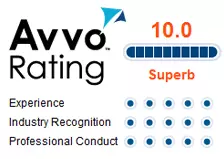Fully comprehending and understanding the metabolism of alcohol is one of the most difficult issues facing DUI lawyers. This is nevertheless a critical area of investigation and knowledge, and one over which the effective practitioner must have a significant command.
This is because the litigation of drunk driving cases nearly always involves some aspect of alcohol metabolism. DUI lawyers are constantly dealing with such questions as: how much did the driver actually drink and over what period of time? How many drinks are represented by the driver’s chemical test results? Are the State’s test results technically correct? Most importantly perhaps, what was the driver’s bodily alcohol content at the time of the driving?
In order to determine the bodily alcohol content at the time of the driving a relatively complicated scientific formula known as the “Widmark formula” must be used. The science itself is called “retrograde extrapolation,” with “retro” meaning prior, “grade” referring to the number, and “extrapolation” meaning to guess.
The science of retrograde extrapolation is based on many of the unique characteristics of ethanol (beverage alcohol) and how these characteristics impact the ethanol molecules after they enter the body, usually through the mouth. Upon consumption the alcohol follows the specific pathways of absorption, distribution and elimination.
In the human system each of these pathways fall within specific parameters or ranges but are also subject to individual variations within the human population. Stated differently, there is significant person-specific variation in the way alcohol is absorbed by a given individual, the way it is distributed throughout his or her body, and most notably for this discussion, the manner and speed within which it is eliminated.
Because the relatively arcane nature of the formula, and the difficulty of its use in practice, attorneys handling DUI/DWI and other alcohol related cases may want to consider purchasing BAC Tracker®, a new computer alcohol extrapolation program. This program is noteworthy because it incorporates seventy-five years of published refinements to the original Widmark formula, and provides accurate, comprehensive multi-model results of six different published formulae. It also graphically demonstrates the existence of variation in the estimation of blood alcohol concentration (BAC) among these six formulae.
Further data manipulation arms the user with the ability to relay the results of particular relevance in an understandable format to juries, judges, attorneys, and forensic experts in the courtroom. The BAC Tracker software is based on host of peer reviewed publications of the various formulae, and these are all incorporated into the software. Consequently, the user can have a high degree of confidence in the results.
A bibliography is also provided in the user manual and published on their website. This allows user to cross reference the published works, and this lends credibility to the results when they are submitted for admission at trial. The use of this software by might provide juries with a better understanding of the variations present in the estimation of blood alcohol concentration. Also, the BAC Tracker is a software program designed for multi-model extrapolation of blood alcohol concentration.









